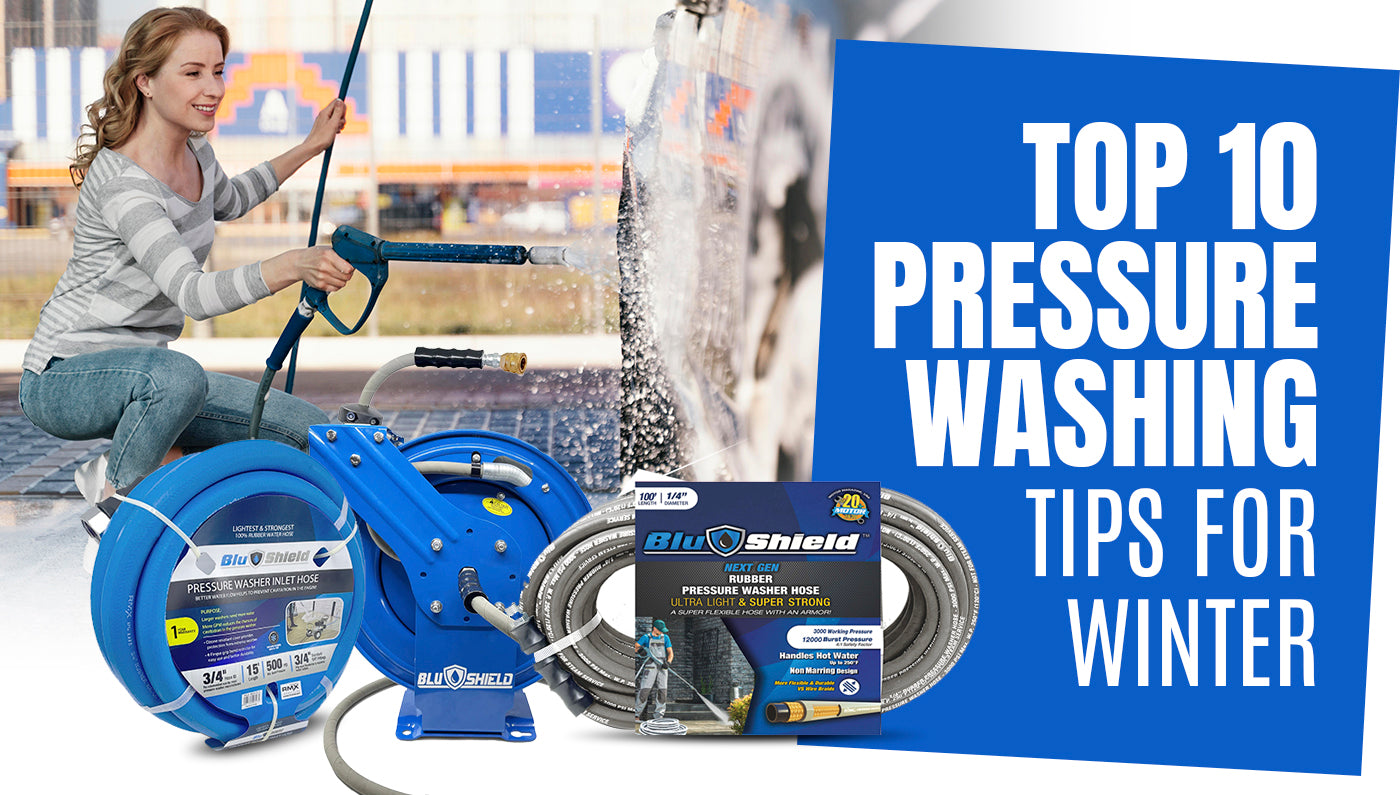Winters can bring a unique set of challenges for cleaning outdoor spaces. This is because most water freezes in places that have temperatures below minus, and working with cold water can be a challenge in itself.
This is where a pressure washer stands out for its effectiveness in cleaning. However, using a pressure washer during the colder months requires special attention. To ensure your machine operates efficiently and safely, here are the top 10 tips for pressure washing in winter.
10 pressure washing tips for winter
1. Choose the right day
It’s essential to choose a day when the weather is a bit warm. This is because the water left on surfaces can quickly freeze, leading to potential hazards and damage. Thus, try to wait for a milder day with temperatures consistently above 40°F (4°C) to ensure the water doesn't freeze mid-process.
2. Inspect the equipment
Before you start any cleaning task, make sure you inspect your pressure washer for any signs of wear or damage. Check the hoses, nozzles, and connections for leaks and cracks. The cold can lead to ruptures through weak spots in the hose. Thus, a thorough inspection is necessary for safe operation.
3. Use the right nozzle
The type of nozzle you use depends on the task at hand. For delicate surfaces or a wider cleaning area, use a wider spray pattern. For tougher stains or concentrated areas, opt for a narrower nozzle setting. It is a good idea to always start with a wider spray to avoid potential damage.
4. Protect water sources
Ensure that your water sources, like taps or hoses, are insulated against freezing in the cold weather. Keep your hoses indoors until you're ready to use them. Frozen water lines can damage your equipment and disrupt your cleaning process.
5. Avoid frozen surfaces
Never try to pressure wash surfaces that are already frozen or covered in snow. This can cause further damage to the surface and is ineffective. Instead, wait for surfaces to thaw naturally or clear them manually before proceeding.
6. Use Appropriate Cleaning Solutions
Some cleaning agents will be less effective in the cold weather. Thus, ensure you're using a solution that's suitable for winter cleaning. Additionally, always make sure to test any new cleaning solution on a small area first to ensure it won't damage the surface.
7. Avoid windy days
Do not try to pressure wash in windy conditions, as it can be problematic. Not only can it affect the direction and consistency of your spray, but it can also blow water and debris onto unintended surfaces. Choose a calm day to achieve the best results and minimize the mess.
8. Wear Appropriate Gear
Safety should be your number one priority. Thus, you should wear waterproof boots with good grip to prevent slips. You can also consider using gloves that provide both warmth and dexterity. Additionally, consider using protective eyewear that can shield your eyes from debris and cold water.
9. Properly store equipment
After use, ensure you properly drain and store your pressure washer. This prevents any residual water from freezing and damaging internal components. Store it in a dry, insulated area where it's shielded until you use it again.
10. Regular maintenance
Winters can be taxing on any type of machinery. Thus, you should regularly check your pressure washer for any signs of wear, especially if you use it frequently. Try to clean or replace the filters as needed, and keep an eye on oil levels.
Final thoughts
Pressure washing in winter can be tough. However, with our tips listed above, you can now pressure wash away in the cold without any hassles. So, the next time it's freezing outside, but you think your patio could do with a bit of cleaning, make sure you follow the tips listed above to avoid getting yourself into a pressure-washing nightmare!

Thinking of buying a great pressure washer? Check out our world-class pressure washer hoses and hose reels from The Blue hose

